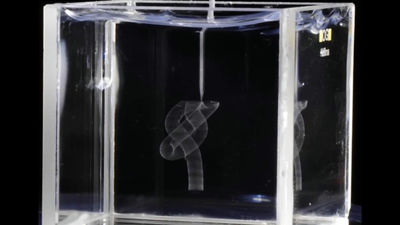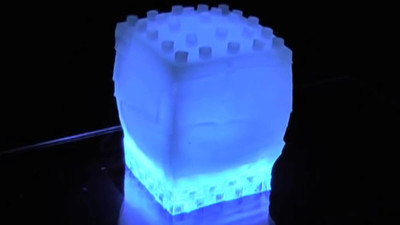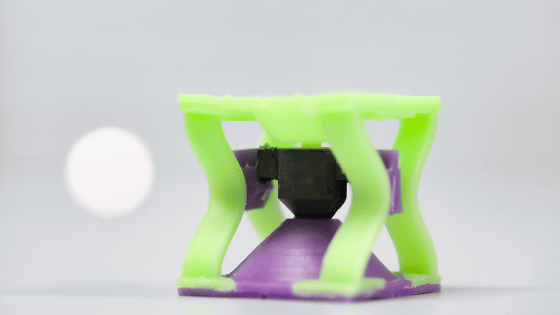A prototype of a group of small robots that can transform like the T-1000 from 'Terminator 2' has appeared

by Brian Long/UCSB
Taking inspiration from embryos, which develop limbs and various organs from a mass of cells, a research team from the University of California, Santa
Material-like robotic collectives with spatiotemporal control of strength and shape | Science
https://www.science.org/doi/10.1126/science.ads7942
How to get a robot collective to act like a smart material | The Current
https://news.ucsb.edu/2025/021769/how-get-robot-collective-act-smart-material
We've figured out the basics of a shape-shifting, T-1000-style material - Ars Technica
https://arstechnica.com/science/2025/03/weve-figured-out-the-basics-of-a-shape-shifting-t-1000-style-material/
'When I was a kid, I saw the movie 'Terminator 2' and I thought, 'Wow, I can't imagine that this is possible,'' says Otger Kampas, a former professor at the University of California, Santa Barbara, and currently a professor at the Max Planck Institute of Molecular Biology and Genetics in Germany.

To recreate the T-1000, which can transform its hands into blades and liquefy itself to slip through bars, Campas and his team at the University of California, Santa Barbara looked to previous research that has uncovered how embryos form.
The research team was particularly interested in three features of the embryo: its ability to rearrange cells, its ability to transmit signals that allow cells to recognize each other, and its ability to form strong connections with other cells.
'To shape themselves, embryonic cells can switch tissues between fluid and solid states -- a phenomenon in physics known as stiffness transition,' Kampas explains.
Applying this knowledge to robotics, the team developed a system of small robots that can work together to change shape and strength. Each robotic unit is equipped with eight electrically powered gears, with optical sensors telling it which direction to rotate the gears to change the overall shape.

Once it has transformed into the desired shape, magnets around the periphery of the robot are rotated to attract each other and hold it together in a rigid shape.

The robots can support up to 500 times their own weight, and if they join together to form a cube, they can carry a 70kg adult.

The proof of concept presented this time is that each robot is relatively large, about 5 cm in diameter, and has a small number of units, but the research team believes that by further miniaturizing the units and increasing their number, it is possible to make the robot ensemble look like a single material.
'I want to be clear that our robot is far from being a Terminator,' Kampas said. 'It's not going to happen tomorrow, but we've set a precedent for what a T-1000 robot could be, and we just need to miniaturize it. Our goal was to get people excited about it so they would want to try it.'
Related Posts:







